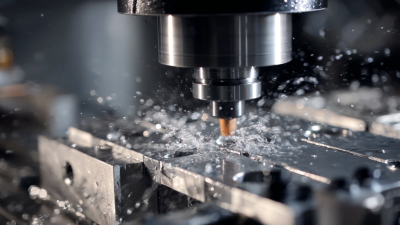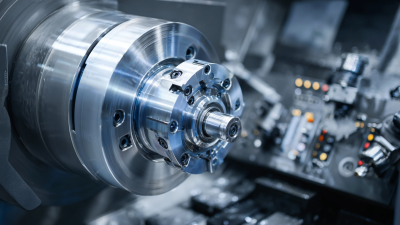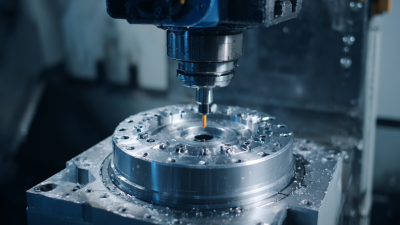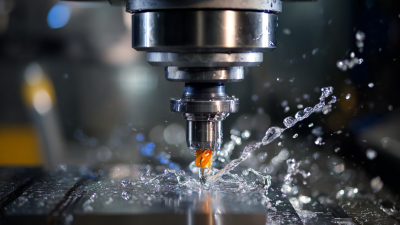
- sales@bjbod.com
- Mon - Sat at 7:00AM to 9:00PM

When embarking on a new project that involves precision machining, selecting the right CNC bushing can make all the difference in ensuring optimal performance and accuracy. A CNC bushing, often used to guide or support rotating spindles and components, plays a crucial role in minimizing friction and wear while enhancing the overall efficiency of your machining process. However, with a plethora of options available on the market, identifying the ideal CNC bushing tailored to your specific project needs can be overwhelming. This guide aims to simplify that process by outlining essential factors to consider, including material types, sizes, and compatibility with different machines. By the end of this article, you will be equipped with the knowledge to confidently choose the right CNC bushing, enabling you to achieve the best results in your fabrication endeavors.

CNC bushings are crucial components in precision machining, providing support and guidance for rotating or sliding elements within a CNC machine. Understanding key terminology and the various types of bushings is vital for making informed decisions in your projects. According to industry reports, the global CNC bushing market is projected to grow at a CAGR of 5.2% from 2022 to 2030, highlighting the increasing demand for efficient and reliable machining solutions.
When selecting a CNC bushing, it's essential to recognize different types based on their materials and designs. For instance, bronze bushings are renowned for their wear resistance and ability to tolerate high loads, making them ideal for heavy machinery operations. On the other hand, plastic bushings like nylon are favored for their low friction properties and resistance to corrosion, making them suitable for lighter tasks. In fact, data shows that the plastic bushing segment accounted for approximately 40% of the market share in 2021, reflecting their popularity across various applications, from automotive to aerospace. Understanding these nuances can significantly impact the efficiency and longevity of your CNC projects.
| Bushing Type | Material | Application | Size Range (mm) | Tolerance |
|---|---|---|---|---|
| Standard Bushing | Aluminum | General Purpose | 5 - 50 | ±0.02 |
| Flanged Bushing | Brass | Automotive | 10 - 60 | ±0.05 |
| Spherical Bushing | Polymer | Robotics | 15 - 75 | ±0.03 |
| Self-lubricating Bushing | Bronze | Heavy Machinery | 20 - 100 | ±0.1 |
| Precision Bushing | Stainless Steel | Aerospace | 5 - 30 | ±0.01 |
When selecting a CNC bushing, the choice of material plays a critical role in determining its overall performance. Different materials, such as steel, bronze, and polymer composites, offer distinct advantages and limitations. For instance, according to a report by the International Journal of Advanced Manufacturing Technology, brass and bronze bushings show superior wear resistance, making them ideal for high-load applications. In contrast, polymer-based bushings are often preferred in environments where corrosion resistance is paramount, particularly in the food and chemical industries.
The performance metrics of CNC bushings can significantly be influenced by temperature and load conditions. A study published by the Society of Manufacturing Engineers highlights that the tensile strength of steel bushings can reach up to 600 MPa, providing robustness in challenging operational environments. However, this strength comes at the cost of increased weight, which can be a critical factor in precision projects. By evaluating the specific requirements of the application—such as thermal expansion and lubrication needs—manufacturers can make informed decisions about which material will optimize the performance and longevity of CNC bushings in their projects.
When it comes to CNC bushing selection, precision tolerances are paramount. These tolerances determine how well the bushing will fit within the assembly, impacting everything from functionality to durability. When selecting a CNC bushing, it's essential to consider the specific requirements of your project, such as load capacity, thermal expansion, and the operating environment. Poorly chosen bushings can lead to excessive wear or even failure in high-stress applications, highlighting the importance of precision in manufacturing processes.
Manufacturers specializing in CNC machining, like those with extensive experience in creating high-temperature materials, understand the critical role tolerances play in creating reliable parts. High-quality CNC machining enables the production of bushings that meet stringent specifications, ensuring that they perform effectively under varying conditions. By prioritizing precise tolerances and selecting the right manufacturing techniques, you can enhance the reliability and efficiency of your projects, ultimately leading to superior outcomes.
When evaluating load capacity for CNC bushings, understanding the specific requirements of your project is crucial. According to industry standards, such as those detailed in the International Organization for Standardization (ISO) guidelines, bushings must be sized not only according to their external dimensions but also based on their material properties and intended load. For example, high-density plastic bushings can handle loads of approximately 500 to 1,500 N, whereas metal bushings may support higher loads depending on their design. Selecting the right bushing involves a careful analysis of both static and dynamic loads to ensure long-term performance and durability.
Furthermore, the lifespan of CNC bushings is directly correlated to their load capacity and usage conditions. A report from the American Society of Mechanical Engineers (ASME) indicates that bushings with a greater load-bearing capacity often feature enhanced wear resistance, resulting in lower maintenance costs. Different materials, like bronze or polymer combinations, provide various benefits—bronze bushings are known for their strength and heat resistance, while polymer options offer corrosion resistance and lower friction. When sizing CNC bushings, consider both the maximum load they will encounter and the operating environment to ensure optimal performance and longevity in your projects.
When it comes to procuring CNC bushings, organizations face a delicate balancing act between cost and quality. Recent advancements in AI and machine learning are revolutionizing procurement processes, allowing teams to assess suppliers more effectively and make informed decisions. According to industry reports, these technologies can speed up procurement tasks by as much as 80%, providing teams with the agility needed to respond quickly to market demands while managing costs.
Tips: Prioritize supplier evaluation services to ensure that your chosen suppliers consistently deliver quality and reliability. Robust supplier assessments can help in identifying partners that align with your project requirements, ultimately leading to better performance and reduced risk.
Data-driven procurement approaches also underscore the importance of analyzing market dynamics. With advanced analytics, procurement teams can enhance supplier relationships and forecast demand more accurately, minimizing risks. This informed strategy enables organizations not only to optimize their supply chains but also to conduct effective cost benchmarking, ensuring they achieve the best value without sacrificing quality in their CNC bushing projects.





